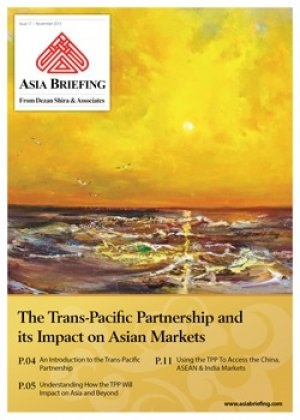ASEAN Market Watch: Malaysia Tourism, Thailand’s Railway Network, and Laos’ Economic Growth Forecast
Malaysia: Incentives on Offer to Attract More Chinese Tourists
After the Philippines, Malaysia is all set to lure Chinese tourists with a raft of initiatives. Earlier this year, Malaysia signed a Memorandum of Understanding (MoU) with Chinese e-commerce company Alibaba, which allows Chinese consumers to access Malaysian tourism and services on its website. In addition, the Malaysian government launched an e-visa programme to ease entry restriction for Chinese tourists. At present, the government allows visa-free entry for Chinese tourists staying for 15 days or less.
China currently has the largest outbound tourism market. In 2015, around 120 million Chinese nationals traveled abroad, with Malaysia a key destination. Chinese tourists to Malaysia were 1.68 million in 2015, a 4 percent increase from the previous year. In 2016, inbound traffic from China continued to increase. This is shown by an upsurge in the number of flights. For example, AirAsia has increased weekly flights from Beijing and Shanghai to Kuala Lumpur. The government has set a target of bringing 30.5 million visitors by the end of 2016. Other initiatives include investing in transport infrastructure. A high-speed rail service between Malaysia and Singapore is expected to be completed in 2026. An integrated transport system is also planned in Penang which is expected to increase tourist activity.
 RELATED: Visa and Work Permit Services from Dezan Shira & Associates
RELATED: Visa and Work Permit Services from Dezan Shira & Associates
Thailand: Regional Partners to Help Expand Rail Network
Thailand is expected to expand its rail network over the next decade with the help of regional partners China and Japan. The expansion of the rail network is expected to improve domestic and regional connectivity while boosting economic growth. In September, announcements were made regarding the first phase of the Chinese-Thai high-speed rail network, which is expected to start construction in the second quarter of next year. While Chinese technology will be used, Thailand would be fully responsible for the investment. The railway line will connect China with Thailand via Laos.
Earlier in August, Thailand signed a MoU with Japan for a 416 miles (670km) high-speed railway between Bangkok and Chiang Mai at an estimated cost of US$ 12.3 billion. In addition, Japanese companies are conducting studies for rail projects that will connect Thailand with neighboring countries such as Myanmar, Laos and Cambodia. The railway projects are part of Thailand’s larger plan to improve infrastructure, which according to the government is one of the main obstacles of the country’s economic development. Once complete such projects are expected to have knock-on benefits in the construction and tourism sectors.
 RELATED: US Visitors to Vietnam Now Eligible for 1 Year Visa
RELATED: US Visitors to Vietnam Now Eligible for 1 Year Visa
Laos: Economic Growth to Remain Steady Up To 2018
The World Bank on October 6 stated that Lao’s economic growth will remain steady through 2016 to 2018. While moderate, growth will continue to be around 7 percent in 2016. This growth will be driven by the power sector and recovery of agriculture and manufacturing sectors. While growing electricity exports have helped, low commodity prices negatively affected fiscal revenues and have widened the deficit.
Nevertheless, power generation is expected to increase by 20 percent this year. In addition, construction has continued to grow, supported by pipeline power projects and real estate. Government authorities now need to improve connectivity and productivity. Analysts have further stated that the government should also give sufficient attention to the fiscal outlook and manage the exchange rate and financial sector risks. In addition, Special Economic Zones (SEZs) have increasingly become more attractive to foreign investors due to tax incentives. Around 300 companies have invested in such SEZs with a total registered capital of US$ 8 billion.
|
Asia Briefing Ltd. is a subsidiary of Dezan Shira & Associates. Dezan Shira is a specialist foreign direct investment practice, providing corporate establishment, business advisory, tax advisory and compliance, accounting, payroll, due diligence and financial review services to multinationals investing in China, Hong Kong, India, Vietnam, Singapore and the rest of ASEAN. For further information, please email asean@dezshira.com or visit www.dezshira.com. Stay up to date with the latest business and investment trends in Asia by subscribing to our complimentary update service featuring news, commentary and regulatory insight. |
Annual Audit and Compliance in ASEAN
For the first issue of our ASEAN Briefing Magazine, we look at the different audit and compliance regulations of five of the main economies in ASEAN. We firstly focus on the accounting standards, filing processes, and requirements for Indonesia, Malaysia, Thailand and the Philippines. We then provide similar information on Singapore, and offer a closer examination of the city-state’s generous audit exemptions for small-and-medium sized enterprises.
 The Trans-Pacific Partnership and its Impact on Asian Markets
The Trans-Pacific Partnership and its Impact on Asian Markets
The United States backed Trans-Pacific Partnership Agreement (TPP) includes six Asian economies – Australia, Brunei, Japan, Malaysia, Singapore and Vietnam, while Indonesia has expressed a keen willingness to join. However, the agreement’s potential impact will affect many others, not least of all China. In this issue of Asia Briefing magazine, we examine where the TPP agreement stands right now, look at the potential impact of the participating nations, as well as examine how it will affect Asian economies that have not been included.
 An Introduction to Tax Treaties Throughout Asia
An Introduction to Tax Treaties Throughout Asia
In this issue of Asia Briefing Magazine, we take a look at the various types of trade and tax treaties that exist between Asian nations. These include bilateral investment treaties, double tax treaties and free trade agreements – all of which directly affect businesses operating in Asia.









